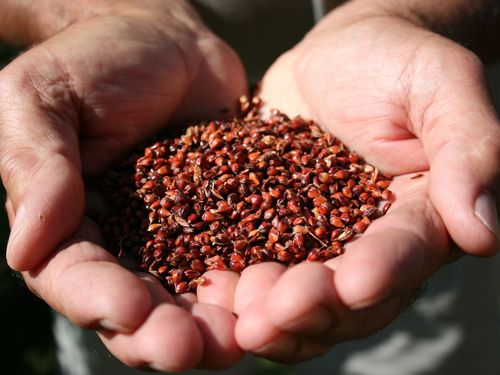Viennese sausage stand culture
Social practices in Vienna, inscribed 2024
The Viennese sausage stand (‘Wiener Würstelstand’) culture came into being at the beginning of the 18th century when warm sausages were sold by the so-called ‘Bratlbrater’ (job title given to people who roasted food on mobile stands). Since that time, the resulting free-standing sausage stands have not only characterised the cityscape but have also become a place for social gatherings and have influenced the use of language in Vienna. Besides the fact that they are free-standing, the distinguishing features of the sausage stands include their choice of products, the informal atmosphere, and the vocabulary that has evolved around them.
The Bratlbraters' trade was established during the imperial era to secure an income for the war-disabled—in a similar way to the operation of tobacconist's shops. Thanks to the invention of the frankfurter sausage (‘Frankfurter Würstel’), the 19th and 20th centuries witnessed the evolution of the sausage stand culture and its free-standing units, which are an integral part of the Viennese cityscape.
The stands' operators often run small businesses with a long-standing family history in either catering or butchery. Only through interaction with its guests does this culture come to life. This heritage relies on a mixture of people of all age groups, walks of life, and sections of the population, as this enables social exchange and proximity. This, in turn, facilitates the expression and safeguarding of both the Viennese humour (‘Wiener Schmäh’) and the typical terminology used to describe the food and drinks sold at the sausage stands. The sausage stand culture is also regularly the subject of artistic works such as photographic collections, books, and theatre productions. The constant adaptation to visitor demand, especially in culinary terms, contributes to the long-term safeguarding of the sausage stands, which have declined in number in recent years. While there were around 500 sausage stands in Vienna up to 2010, today there are around 120.
By focussing on sustainably producing food businesses as well as safeguarding measures, such as public relations work or proposed projects like ‘the long night of sausage stands’, the aim is to enable the long-term safeguarding of the sausage stand culture.
Contact
Würstelstand LEO, Döblinger Gürtel 2
1190 Wien
servus@verein-wuerstelstand.at
www.verein-wuerstelstand.at - im Aufbau
Downloads
- [Translate to English:] Bewerbungsmappe 1 MB (pdf)
- [Translate to English:] Expertise Girtler 1 MB (pdf)
- [Translate to English:] Expertise Wolf 3 MB (pdf)
![[Translate to English:] Würstelstand I](/fileadmin/Redaktion/Kultur/IKE/IKE-DB/images/Wuerstelstand_I_c_Kuechenfreundin.jpg)
![[Translate to English:] Würstelstand II](/fileadmin/Redaktion/Kultur/IKE/IKE-DB/images/Wuerstelstand_II_c_Patrick_Tondl.jpeg)
![[Translate to English:] Würstelstand III](/fileadmin/Redaktion/Kultur/IKE/IKE-DB/images/Wuerstelstand_III_c_Sebastian_Neuschler.jpeg)
![[Translate to English:] Würstelstand IV](/fileadmin/Redaktion/Kultur/IKE/IKE-DB/images/Wuerstelstand_IV_c__Josef_Bitzinger.jpg)
![[Translate to English:] Würstelstand V](/fileadmin/Redaktion/Kultur/IKE/IKE-DB/images/Wuerstelstand_V_c_Sebastian_Neuschler.jpeg)

![[Translate to EN:] © J. Ségur/ZED, with the permission of UNESCO](/fileadmin/_processed_/d/b/csm_Convention-2003-IKE_0832a6a47d.jpg)
![[Translate to EN:] © ÖUK](/fileadmin/_processed_/3/9/csm_P1011318_7eac86402f.jpg)

![[Translate to EN:] © Weitblickfilm](/fileadmin/_processed_/9/8/csm_Workshop_17_2dee1e1fd8.jpg)